新書推薦:

《
帝国作为装饰品:英国人眼中的大英帝国(帝国与国际法译丛)
》
售價:NT$
403.0
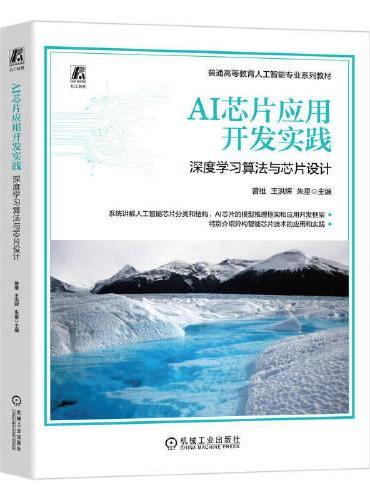
《
AI芯片应用开发实践:深度学习算法与芯片设计
》
售價:NT$
352.0
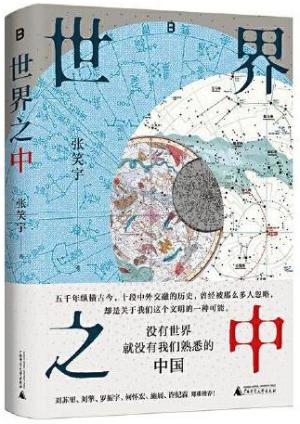
《
世界之中(文明三部曲之后,亚洲图书奖得主张笑宇充满想象力的重磅新作)
》
售價:NT$
403.0
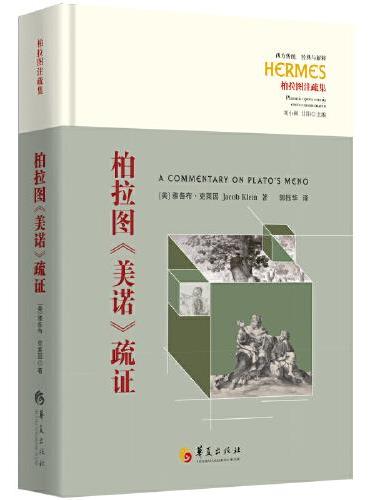
《
柏拉图《美诺》疏证
》
售價:NT$
449.0
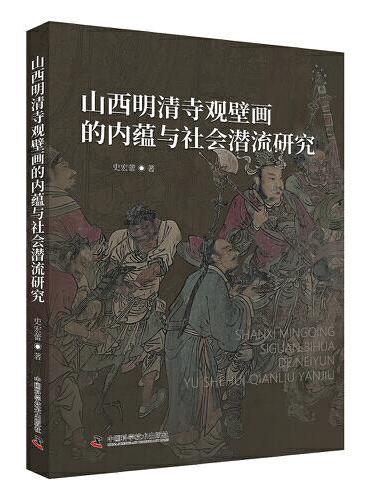
《
山西明清寺观壁画的内蕴与社会潜流研究
》
售價:NT$
653.0
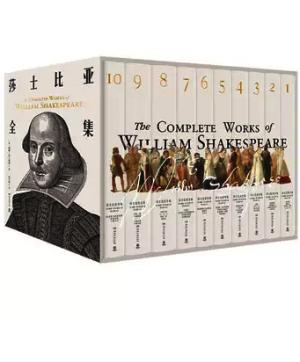
《
莎士比亚全集十卷
》
售價:NT$
2744.0
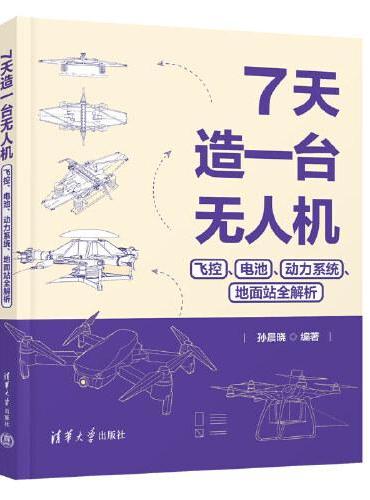
《
7天造一台无人机:飞控、电池、动力系统、地面站全解析
》
售價:NT$
352.0
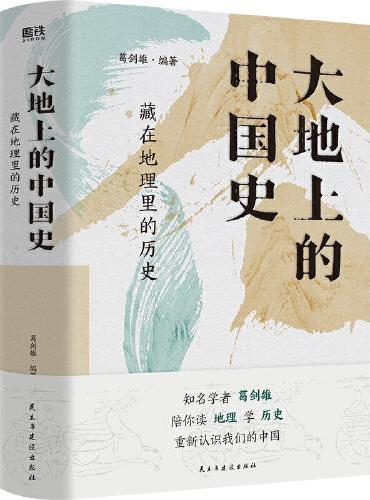
《
大地上的中国史:藏在地理里的历史
》
售價:NT$
347.0
|
| 編輯推薦: |
|
本书是对中古墓葬资料的全新阐释,研究内容、方法和结论都有一定的创新,对历史时期的墓葬研究有一定的推进作用。首先,从一个较长的时段探讨了中古时期的丧葬模式及其演变的成因;其次,基于创新的方法论建立了一套不同于以往的丧葬礼制研究,也不同于物质文化史研究的阐释范式,注重从丧葬礼仪行为来阐释墓葬遗存,在静态的考古遗存与动态的古代社会之间建立了联系;纠正了以往的一些错误认识,对丧葬空间、明器与祭器、丧葬图像等都提出了一些新的看法。此外,本研究还注重墓葬遗存中的人文价值及其传承脉络,这对方兴未艾的文化遗产保护与传承工作具有重要的现实社会意义;死亡考古学的研究思路对田野考古发掘具有一定的指导意义。
|
| 內容簡介: |
|
从战国秦汉至隋唐时期,是中国古代社会、文化、思想发生巨大变迁的时期。受其影响,人们对待死亡的态度和处理死亡的方式也发生了巨大的变化。丰富的墓葬材料和大量的传世文献,使这一时期成为死亡考古学研究的极佳范例。针对中古时期墓葬考古的实际,把墓葬当成古人处理死亡的方式和对待死亡的态度的遗存,主要基于三个关键概念:丧葬空间、丧葬仪式、丧葬观念。其中,丧葬空间是处理死亡的礼仪空间,包括地面墓园和地下墓室两部分,在空间功能上又包括埋葬空间和祭祀空间,通过归纳空间形态,构建每个时期的丧葬模式。丧葬礼仪是墓葬遗存反映的丧葬行为,从静态的考古遗存观察动态的人类活动,从空间形态复原古代丧葬礼仪的场景,历史文献中对中古丧葬礼仪的详细记载,为我们复原丧葬行为和场景提供了极为便利的条件。丧葬观念是指在主流意识形态、宗教和民间信仰的综合影响之下人们对待死亡的态度,中古时期主流意识形态受到儒家、玄学、道教、佛教等多重影响,各个时期对待死亡的态度也相应做出改变,这些在丧葬空间、器物、图像等方面都有着具体的表现。
|
| 關於作者: |
|
李梅田,中国人民大学历史学院考古文博系教授、博士生导师,国家社科基金重大招标项目《隋唐五代壁画墓与中古文化变迁研究》首席专家。1987—1994、1999—2003年在北京大学考古文博学院学习,获历史学博士学位。主要从事汉唐考古、美术考古的教学与研究,重点关注中古社会与文化艺术的变迁。撰有《魏晋北朝墓葬的考古学研究》《中国古代物质文化史·魏晋南北朝》《葬之以礼:魏晋南北朝丧葬礼俗与文化变迁》等专著和《六朝文明》《粟特银器》等译著。
|
| 目錄:
|
前 言 / 001
上 卷
第一章 认识墓葬:墓葬考古研究方法论的回顾 / 003
一、 考古学理论下的墓葬研究 / 003
从文化历史考古学到新考古学 / 004
后过程考古学 / 007
“过渡礼仪”理论 / 008
二、 作为礼制的墓葬研究 / 011
三、 作为礼仪空间的墓葬研究 / 018
四、 作为观念史的墓葬研究 / 022
五、 本书的思路与结构 / 026
第二章 魂魄所归:丧葬礼仪的象征性 / 029
一、 魂魄二元论 / 029
二、 招魂礼 / 031
三、 寓情于礼的丧葬礼仪 / 035
四、 藏形于墓 / 038
五、 安魂于庙 / 041
六、 墓祭引起的墓葬功能转变 / 045
七、 小结 / 049
第三章 黄泉之下:先秦至西汉井椁式的丧葬模式 / 060
一、 黄泉与幽都 / 060
二、 藏形的井椁 / 063
史前木椁的出现 / 063
殷商井椁的构筑 / 064
周代井椁的变革 / 069
秦汉时期的井椁 / 074
墓道的礼仪功能 / 079
三、 陈器之道 / 081
器物的来源 / 081
器物的礼仪含义 / 083
四、 丧葬美术的兴起 / 090
葬具画像 / 090
漆器画像 / 094
帛画 / 096
五、 小结 / 100
第四章 宅第内外:汉代宅第化的丧葬模式 / 112
一、 秦汉帝陵陵园空间 / 112
秦始皇陵开创的陵寝制度 / 112
西汉陵寝制度 / 116
东汉陵寝制度的变革 / 125
二、 墓室的宅第化 / 134
空间形态的新旧转变 / 134
西汉诸侯王墓的宅第化 / 138
东汉宅第墓室的普及 / 144
三、 祭祀空间的配置 / 149
墓地的祭祀设施 / 149
墓内的祭祀空间 / 154
四、 陈器之道的转变 / 169
五、 丧葬美术的勃兴 / 173
画像的原境与主题 / 174
画像的结构与叙事 / 189
六、 丧葬中的道教与佛教元素 / 195
道教元素 / 195
佛教元素 / 211
七、 小结 / 214
第五章 微缩宇宙:魏晋变革下的丧葬模式 / 219
一、 魏晋模式的形成 / 219
二、 墓室空间形态 / 227
墓室的单室化 / 227
魏晋模式的传播 / 234
三、 墓内祭祀与空间营造 / 241
四、 魏晋墓室画像 / 246
河西地区 / 248
东北地区 / 255
南方地区 / 268
五、 遣策与随葬之物 / 269
六、 小结 / 275
下 卷
第六章 复古创新:南北朝地域社会中的丧葬模式 / 281
一、 地域社会中的丧葬模式 / 281
二、 墓地空间与设施 / 300
从平城到洛阳 / 300
邺城与长安 / 309
建康地区 / 311
三、 墓室空间 / 317
平城 / 317
洛阳 / 324
邺城与晋阳 / 329
长安与原州 / 335
建康与襄阳 / 339
四、 丧葬图像的场景与主题 / 342
北朝石葬具画像 / 342
北朝墓室壁画 / 387
南朝画像砖 / 409
五、 若即若离的佛教与丧葬 / 426
佛教图像在墓室空间中的意义 / 428
平城墓葬中的佛教意涵 / 430
佛殿式的墓室:邢合姜石椁 / 436
仙佛同墓:长川1号墓 / 443
墓寺一体:方山陵园 / 447
以窟为墓:瘗窟 / 449
佛教与丧葬的“边界”与“合作” / 452
六、 小结 / 456
地域传统的形成 / 456
空间形态 / 457
石葬具画像 / 459
墓室壁画 / 460
佛教对传统丧葬的影响 / 462
第七章 秩序重建:隋唐一统下的丧葬模式 / 478
一、 陵园空间的承旧与创新 / 479
空间布局的演变 / 479
等级秩序的形成 / 492
陵园内的礼仪活动 / 495
二、 地下的墓室空间 / 498
隋代的埋葬方式 / 499
唐墓的等级秩序 / 505
三、 画像的配置与内容 / 518
石葬具画像 / 518
墓室壁画的空间意涵 / 540
四、 关中模式的对外辐射 / 579
京畿以外的高等级唐墓 / 580
漠北突厥贵族墓 / 593
五、 小结 / 597
第八章 结语:不知死,焉知生? / 601
一、 中古生死观的变迁 / 601
二、 反思墓葬研究的目的 / 609
三、 刍议死亡考古学 / 612
丧葬空间 / 612
丧葬仪式 / 616
丧葬观念 / 622
参考文献 / 625
插图索引 / 683
表格索引 / 691
后 记 / 693
Summary / 695
CONTENTS
Preface / 001
Chapter 1 Understanding Burials: A Review of the Theories on Burial
Archaeology / 003
Archaeological Theories on Burials / 003
From Historical Archaeology to New Archaeology / 004
Post-Processual Archaeology / 007
iii. Theory of “Rite of Passage” / 008
Burials and Ritual Systems / 011
III. Burials and Ritual Spaces / 018
Burials and Concept History / 022
Ideas, Methodology and Outline / 026
Chapter 2 Where the Soul Belongs: Symbolism of Funeral Rites / 029
Dualism of Bodily Soul and Spiritual Soul / 029
Ceremony of Soul-Summoning / 031
III. Funeral Rites with Emotion / 035
Hiding the Bodily Soul in a Tomb / 038
Resting the Spiritual Soul in a Temple / 041
Sacrificial Offering at the Cemetery and Changing of Tomb’s Function / 045
VII. Conclusion / 049
Chapter 3 Beneath the Yellow Spring: The Burial Mode from the Pre-Qin
Period to the Western Han Dynasty / 060
The Yellow Spring and the Dark Necropolis / 060
Well-Shaped Outer Coffin for Hiding the Body / 063
Occurrence of Well-Shaped Coffins in Prehistorical Tombs / 063
Construction of Well-Shaped Coffins During the Shang Dynasty / 064
iii. Reform of the Well-Shaped Coffins During the Zhou Dynasty / 069
Burials with the Well-Shaped Coffins During the Qin & Han Dynasties / 074
Ceremonial Function of a Tomb Passageway / 079
III. Principles of Burial Objects / 081
The Multiple Sources of Burial Objects / 081
The Ritual Implications of Burial Objects / 083
Emergence of Funerary Art / 090
Paintings on Coffins / 090
Paintings on Lacquerwares / 094
iii. Paintings on Silks / 096
Conclusion / 100
Chapter 4 Underground Residencies: The Burial Mode of House-Modeled Tombs
During the Han Dynasty / 112
Spatial Layout of Imperial Mausoleums in the Qin & Han Dynasties / 112
Mausoleum System of Emperor Qin Shihuang / 112
Mausoleum System of the Western Han Dynasty / 116
iii. Reform of Mausoleum System During the Eastern Han Dynasty / 125
The House-Modeled Tomb Chambers / 134
Transformation of Tomb Chambers’ Structures / 134
Occurrence of House-Modeled Chambers in Princely Tombs During the
Western Han Dynasty / 138
iii. Popularization of House-Modeled Chambers in Princely Tombs During
the Eastern Han Dynasty / 144
III. Arrangement of the Ritual Spaces / 149
The Ground-Level Ritual Space in a Cemetery / 149
The Subterranean Ritual Space in a Tomb / 154
Changing of the Principles of Burial Objects / 169
Prosperity of the Funerary Art / 173
Context and Motifs in Pictorial Representations / 174
Programs and Narratives in Pictorial Representations / 189
Buddhist and Taoist Elements in Funerary Practices / 195
Taoist Elements / 195
Buddhist Elements / 211
VII. Conclusion / 214
Chapter 5 Microcosm: The Burial Mode during the Wei-Jin Period / 219
Formation of the Wei-Jin Mode / 219
Tomb Chamber’s Spatial Forms / 227
Single Chamber Tomb / 227
Spread of the Wei-Jin Mode / 234
III. Ritual Space and Spatial Layout in Tombs / 241
Burial Pictorial Representations during the Wei-Jin Period / 246
Hexi Corridor / 248
Northeast Region / 255
iii. Southern Region / 268
Burial Goods Inventory and Tomb Accompaniments / 269
Conclusion / 275
Chapter 6 Retro Practices and Innovations: The Funeral Modes in Regional
Societies During the Northern & Southern Dynasties / 281
Burial Modes in Regional Societies / 281
Cemetery Space and Facilities / 300
From Pingcheng to Luoyang / 300
Yecheng and Chang’an / 309
iii. Jiankang / 311
III. Underground Burial Spaces / 317
Pingcheng / 317
Luoyang / 324
iii. Yecheng and Jinyang / 329
Chang’an and Yuanzhou / 335
Jiankang and Xiangyang / 339
Scenes and Themes in Funeral Images / 342
Stone Coffin Images of the Northern Dynasties / 342
Tomb Chamber Murals of the Northern Dynasties / 387
iii. Image Bricks of the Southern Dynasties / 409
The Ambiguous Relationship between Buddhism and Funerary Practices / 426
The Meaning of Buddhist Images in Burial Spaces / 428
Buddhist Connotations in Pingcheng Burials / 430
iii. A Buddhist Hall-Style Tomb Chamber: The Xinghejiang Stone Outer
Coffin / 436
Co-Locating Immortals and Buddhas in Tombs: The Changchuan Tomb
No.1 / 443
Integration of Tombs and Temples: The Fangshan Imperial Cemetery / 447
Using the Grotto as a Tomb: The Burials in Buddhist Caves / 449
vii. The “Boundaries” and “Collaboration” between Buddhism and Funeral
Practices / 452
Conclusion / 456
The Formation of Regional Traditions / 456
Spatial forms / 457
iii. Stone Coffin Images / 459
Tomb Chamber Murals / 460
The influence of Buddhism on Traditional Funerary Customs / 462
Chapter 7 Reconstructing Order: The Burial Mode under the Unified Sui & Tang
Dynasties / 478
The Evolution and Innovation of the Spatial Layout of Cemeteries / 479
Changing of Spatial Layout / 479
Formation of Hierarchical Order / 492
iii. Ceremonial Activities in Cemeteries / 495
Underground Burial Spaces / 498
Burial Methods during the Sui Dynasty / 499
Hierarchical Order of Tang Tombs / 505
III. Configuration and Content of Tomb Paintings / 518
Pictorial Representation on Stone Coffins / 518
Spatial Significance of Tomb Murals / 540
The Radiation of the Capital Model / 579
High-Level Tang Tombs Outside the Capital Region / 580
Tombs of Turko-Mongol Elites in the Far North / 593
Conclusion / 597
Chapter 8 Conclusion: Can Life be Understood Without Understanding Death? / 601
The Changing Concept of Life & Death / 601
Rethinking the Purpose of Burial Archaeology / 609
III. A Preliminary Discussion on “Archaeology of Death” / 612
Burial Spaces / 612
Burial Rites / 616
iii. Concepts of Life & Death / 622
Bibliography / 625
Index of Illustrations / 683
Index of Tables / 691
Epilogue / 693
Summary / 695
|
| 內容試閱:
|
后 记
很多考古从业者可能都被问到过这样的问题:“考古就是挖墓吗?”“你们为什么要挖墓?”语气中充满了好奇,也隐藏着一些不解,甚至一丝责难。我们当然可以以“考古可不是盗墓”“我们是为了研究历史(或保护文物)”来回应,但这样的回应多少有些苍白,并不能打消问话者的疑虑。那么,对于一名考古学者来说,墓葬到底意味着什么?研究墓葬到底要达到什么样的学术目的?
中国墓葬的考古史几乎与中国现代考古学的发展同步,从郭宝钧、陈公柔等对商周墓葬的研究,到杨树达、杨宽、俞伟超、李如森等对汉墓的研究,再到当今越来越多的考古研究者,都用墓葬资料来诠释古代丧葬礼制、建构文化史,用来辅证传世文献记载的政治史与社会史。这些当然是墓葬考古的重要内容,也是过去二十多年我的研究主题,但现在,我更愿意把墓葬当作一种人文主题的研究对象,更希望聚焦于人类自身—人类的死亡与生命。
墓葬从本质上来说属于“死亡的遗存”,它以一种特殊的方式“记录”了古人的死亡,见证了古人处理死亡的方式、对待死亡的态度。在不同时代、不同地区、不同形态的古代文明中,死亡遗存的形式千差万别,但都是特定丧葬仪式的结果,都是生者对于死亡的认知与表达,其间的差异反映了人类文化的多样性。通过这些“死亡的遗存”来观察古人的丧葬行为和对待死亡的态度,是对人类自身命运的关切,也是作为人文学科的考古学所应秉持的人文取向。墓葬考古直面的是死亡,但关切的却是现世的生命与生活,以及与之关联的信仰、审美、情感、尊严等人文主题,采取的是一种独特的由死及生地探索人类历史的研究路径。
正是基于这样的人文取向,我在本书中尝试以“死亡考古”来解读中古中国的丧葬模式、丧葬礼仪与丧葬观念,希望揭示这个时期丧葬行为中的人文内核及其传承脉络。这个写作思路主要是对自己以往所持文化史研究方法的一种反思、一个改变,或可称为“人文转向”。但由于学力所限,目标远未达成,其中必有很多错讹之处和肤浅之谈,还希望方家不吝指正。
本书主要是在新冠疫情期间完成的。在疫情刚开始的时候,行动还很自由,交通异常畅通,学校也非常安静。那段时间,我几乎每天驱车前往办公室,日出而作、日落而息,每天心无旁骛地思考、写作,效率奇高。现在,对那段“非常”的日子竟有一丝怀念。但它毕竟只是人类历史上的一个非常瞬间,常态终究还是忙碌、纷乱但真实。虽然怀念,还是希望那种“非常”的日子永不再见。
本书是国家社会科学基金2017年度一般项目的结项成果,有幸入选2022年度国家哲学社会科学成果文库,感谢全国哲学社会科学工作办公室以及评委专家们的指导,我已尽量吸收他们的宝贵意见。最后,要感谢上海古籍出版社的编辑同事们,正是他们认真、高效、专业的工作,使得这本小书能顺利出版,在此向他们深深地致谢、致敬!
李梅田
2023年3月于中国人民大学人文楼
|
|










